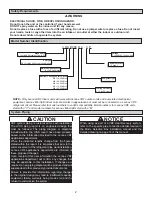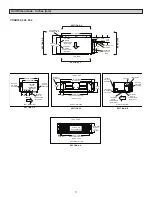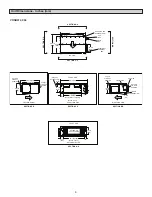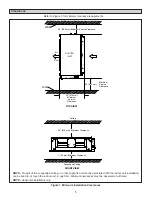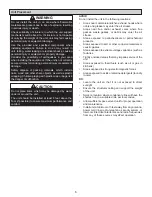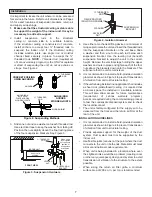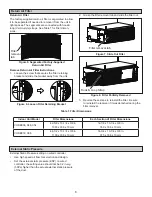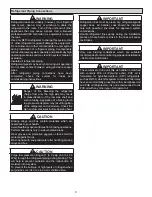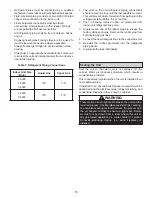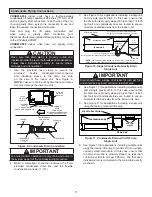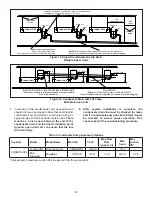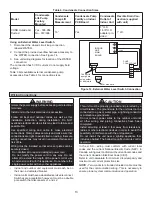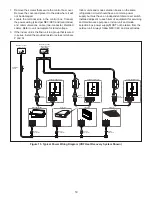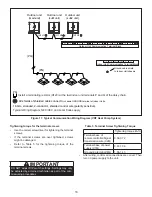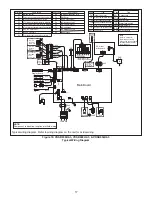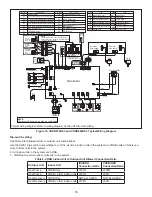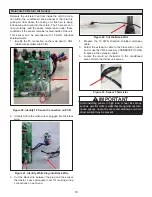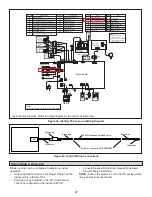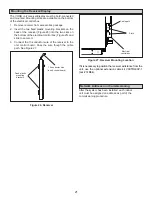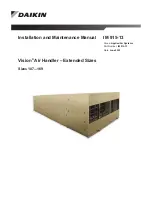
7
Installation
It is important to locate the unit where it can be accessed
for service in the future. Refer to unit dimensions on Pages
3-5 for exact locations of suspension brackets, return air
and supply air openings.
1. Make sure that the structural ceiling or slab is able
to support the weight of the indoor unit. It may be
necessary to add extra support.
2. Install suspension rods in the structural
ceiling or concrete slab in a suitable location.
If the structural ceiling is constructed of concrete,
install anchors to accept four ⅜” threaded rods to
suspend the indoor unit. If the structural ceiling
includes wooden joists, use angle iron or Unistrut
channel fixed securely in place to accept the ⅜”
threaded rods.
NOTE -
Threaded rod (requirement
of Lennox warranty program) is the ONLY acceptable
method of suspending the unit; do not use chains or
straps.
See Figure 2.
3. Slide one nut and one washer onto each threaded rod.
Use electrical tape to keep the washer from failing off.
Position the nuts slightly above the final resting place
of the four suspension brackets. See Figure 3.
Figure 2. Suspending Methods
ANGLE IRON
BOLTED IN
PLACE ACROSS
WOODEN JOISTS
WOODEN JOIST
⅜” THREADE
D
ROD
ANGLE IRON
ACROSS
WOODEN JOISTS
ANCHOR
CONCRETE CEILING
USING ANCHORS
⅜” THREADE
D
ROD
4. Use either a mechanical lifting device or a minimum of
two people to raise the unit and insert the threaded rods
into the suspension brackets on the unit base. Slide
a washer and then a nut onto each rod below each
suspension bracket. Use the leveling nut (beneath
suspension bracket) to adjust the unit to the correct
height. Remove the electrical tape holding the upper
washers and nuts in place and tighten each of the four
nuts above the brackets down onto the brackets. This
will ensure that the unit remains level.
5.
It is recommended to install a field-provided isolation
grommet as shown in Figure 4 to prevent transmission
of vibration from unit to structural ceiling.
6. If the unit is being installed in an application that includes
a sheet rock (plasterboard) ceiling, it is required that
an access panel be installed in a suitable location.
This will also allow access for future maintenance
(requirement of Lennox warranty program).
Access is required during the commissioning process
to test the condensate disposal system and to check
the local disconnect.
7.
The unit is factory-configured for the supply air to be
delivered from the front and the return air filter at the
rear of the unit.
INSTALLATION GUIDELINES
•
It is recommended to install a field-provided isolation
grommet as shown in Figure 4 to prevent transmission
of vibration from unit to structural ceiling.
• Provide separate support for the weight of the duct
system. Duct system must not be supported by the
indoor unit.
•
Use flexible joints (canvas) at the point where the duct
connects to the unit on both ends. Material must meet
all local and national code requirements.
• When unit is being installed in a location where even
the slightest noise would be a problem (meeting room
or other very quiet space), design duct system to avoid
transmission of vibration to the structure to the extent
possible.
•
When sizing the return air filter grille, a minimum
surface area of 200 sq. in. per ton is recommended.
LEVELING
NUT
⅜
” THREADED
ROD
SUSPENSION
BRACKET
FIELD-PROVIDED
ISOLATION GROMMET
WASHER
INDOOR UNIT
LEVELING
NUT
⅜
” THREADED
ROD
SUSPENSION
BRACKET
SUPPLY AIR
OPENING
FRONT VIEW
When unit is
level, tighten
nut to secure
position of
suspension
bracket on
rod.
Figure 3. Suspension Hardware
Figure 4. Isolation Grommet


